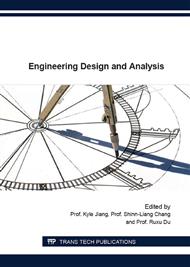p.61
p.66
p.71
p.77
p.82
p.88
p.93
p.99
p.105
Effect of Coolant Pressure on Machinability of Titanium Alloy Ti6Al4V
Abstract:
Titanium alloy Ti6Al4V comes with several desirable and undesirable properties. Its low thermal conductivity and high chemical reactivity makes it difficult for machining producing high cutting temperature and adhesion tendency. Cutting fluids are used to remove the heat generated at the chip tool interface during the machining process. The coolant with low pressure and improper delivery is not able to break the vapor barrier created by high cutting temperature. The current research investigates the effect of using high pressure coolant system (60 Bar) on the machinability of Ti6Al4V. The machinability was measured in terms of chip breaking, chip thickness, surface finish, tool wear, etc. A detailed statistical and chip mechanism analysis was performed emphasizing the phenomenon of shear band formation, crack formation, chip thickness, chip serration frequency, etc.
Info:
Periodical:
Pages:
82-87
Citation:
Online since:
February 2016
Authors:
Keywords:
Price:
Сopyright:
© 2016 Trans Tech Publications Ltd. All Rights Reserved
Share:
Citation:


